From the “Near Threatened” to the “Critically Endangered”
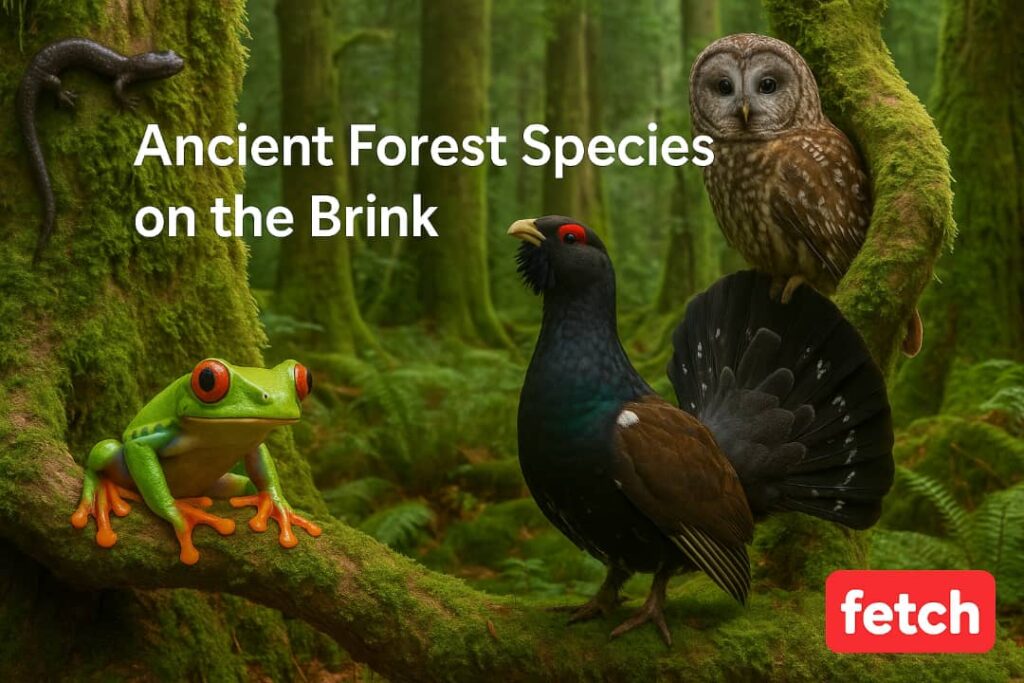
Exploring the world’s oldest forests reveals a treasure trove of unique animals that have thrived in these ancient ecosystems for millennia. These creatures are often rare, elusive, and perfectly adapted to the stable, complex environments that only the oldest forests can provide. Let’s dive deeper into 43 extraordinary animals you’ll only find in the world’s oldest forests, with richer detail to appreciate their significance and the delicate balance they maintain.
1. The Majestic Siberian Tiger
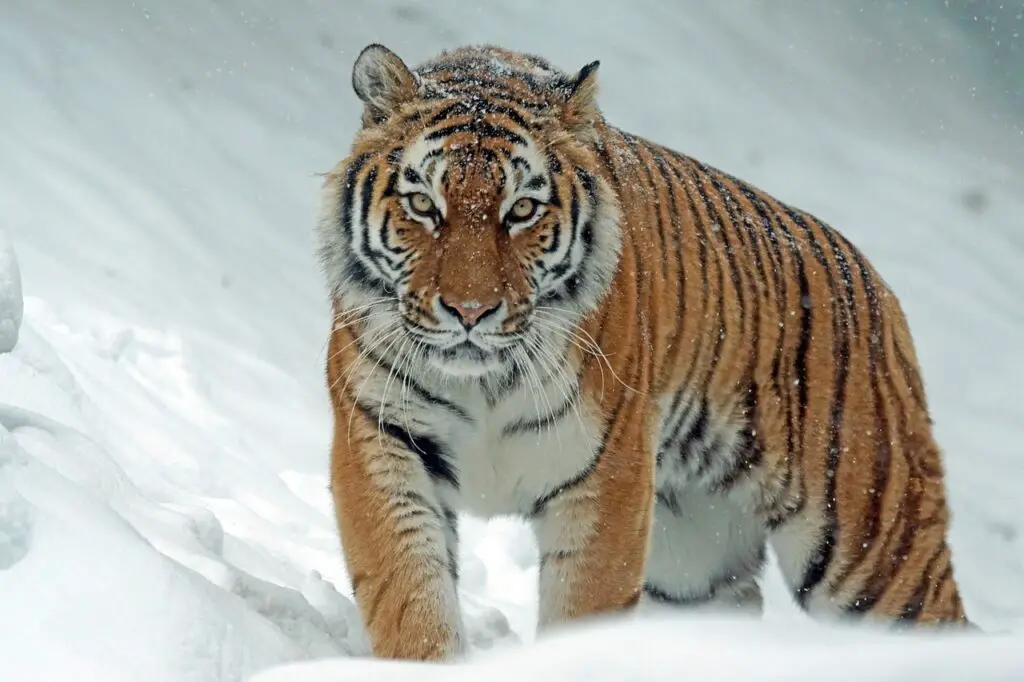
The Siberian tiger, also known as the Amur tiger, prowls the vast, ancient coniferous forests of Russia’s Far East, specifically the Primorsky and Khabarovsk Krais regions, where it inhabits the boreal forests dominated by species like larch, spruce, and fir. As the largest tiger subspecies, it requires enormous territories of old-growth forest, often up to 1,000 km² for males, to hunt its primary prey, including elk, deer, and wild boar, which are abundant in these ecosystems. Its survival also depends on these pristine forests, which provide cover, prey, and breeding grounds, making habitat preservation crucial. This the world’s largest cat, but with only 400 left in the wild, this rare giant is in danger of extinction due to poaching and habitat loss. Source: simple.wikipedia.org
2. The Ancient Tuatara
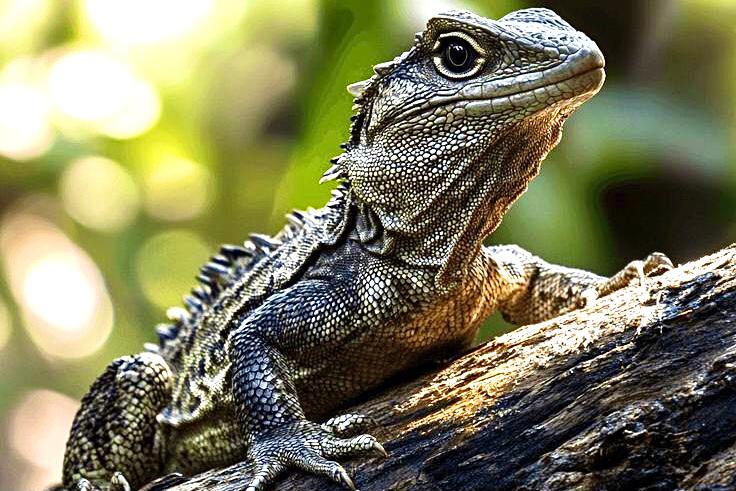
The ancient Tuatara, native to New Zealand’s oldest forest refuges, is a true living fossil, belonging to the order Rhynchocephalia, which dates back to the time of the dinosaurs. The tuatara has changed little in over 200 million years, offering scientists a glimpse into prehistoric life, with its distinctive spiky crest and robust body. It thrives only in undisturbed, mature forests, particularly on offshore islands like those in the Hauraki Gulf and islands off the northeastern coast of the North Island, where it can find shelter in burrows and food in the form of insects, worms, and snails. According to the New Zealand Department of Conservation, the tuatara is classified as “Not Threatened”, but its populations are closely monitored due to its vulnerability to introduced predators like rats, which prey on both adults and eggs. Source: sciencelearn.org.nz
3. The Lemur (Aye-Aye)
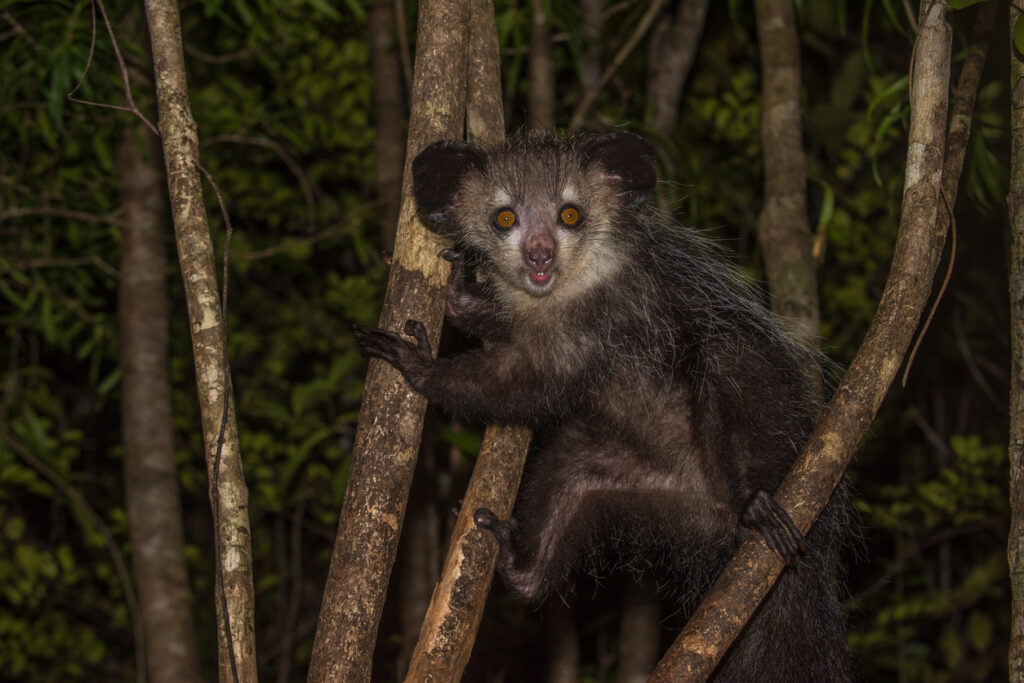
Madagascar’s ancient rainforests shelter the aye-aye, a nocturnal lemur with an extraordinary method of locating insects by tapping on tree bark, a behavior known as “percussive foraging.” Its elongated middle finger is an evolutionary adaptation for extracting grubs and insects from tree crevices, illustrating a specialized niche in these old forests. The aye-aye’s rarity and unusual behavior highlight the evolutionary creativity fostered by ancient forest ecosystems, where unique adaptations have developed over millions of years in response to specific environmental pressures. However, the aye-aye is often persecuted by local communities due to cultural beliefs and superstitions, adding to the threats it faces from habitat loss and fragmentation. Source: timesofindia.indiatimes.com
4. The Giant Pacific Salamander
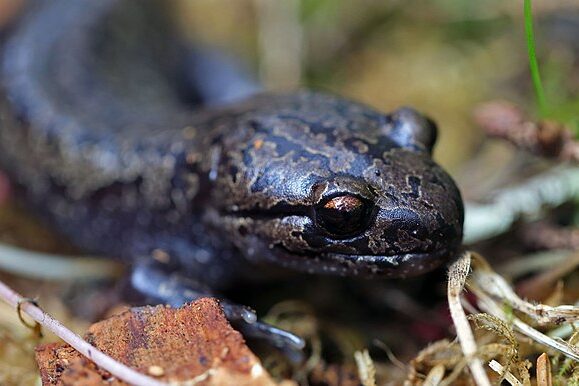
The Pacific giant salamander, found in the temperate rainforests of the Pacific Northwest, is one of the largest salamanders worldwide, reaching lengths of up to 35 cm, and depending on cool, clean streams flowing through old-growth forests for breeding and larval development. It is commonly found in lotic environments like mountain streams and lakes with rock coverage and minimum water velocity. They utilize decaying wood, burrows, or rocks as terrestrial refuge sites and are carnivorous, feeding on insects, worms, and small aquatic animals. Unlike most salamanders, Pacific giant salamanders have vocal abilities, emitting a croaky-sounding cry when startled. According to the IUCN Red List, some species of Pacific giant salamanders are listed as Least Concern, but their populations are declining due to habitat loss and fragmentation. Source: canada.ca
5. The Spectacled Owl
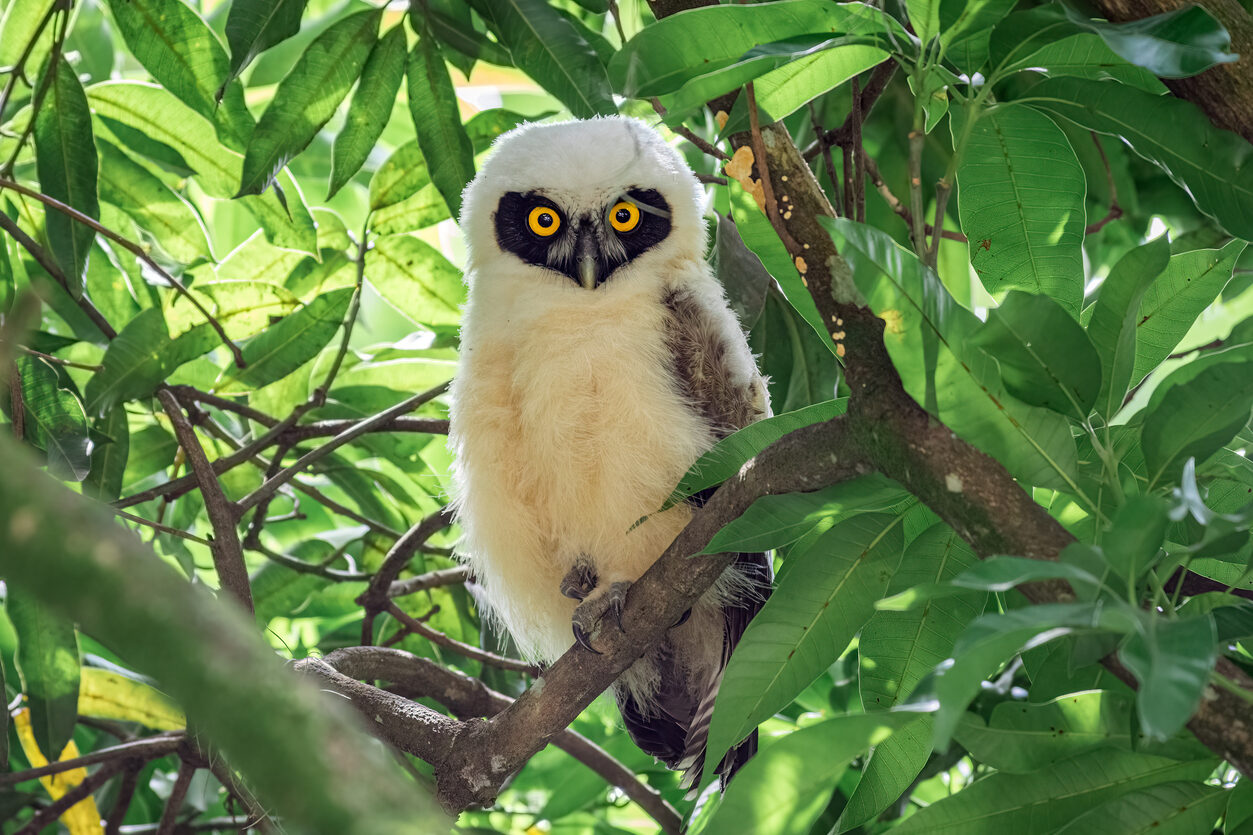
This nocturnal predator, the spectacled owl (Pulsatrix spectabilis), inhabits the dense canopies of South America’s oldest rainforests, including the Amazon and tropical forests of Central and South America. Its distinctive facial markings and silent flight make it a master hunter of small mammals and birds, using its acute hearing and exceptional night vision to locate prey. The spectacled owl depends on large, mature trees for nesting, underscoring the importance of forest age and structure in providing suitable habitat. These forests offer the owl ample opportunities for hunting and breeding, According to the IUCN Red List, the spectacled owl is listed as Least Concern, but its habitat is under increasing pressure from agricultural expansion and logging. Source: animalia.bio
6. The Philippine Eagle
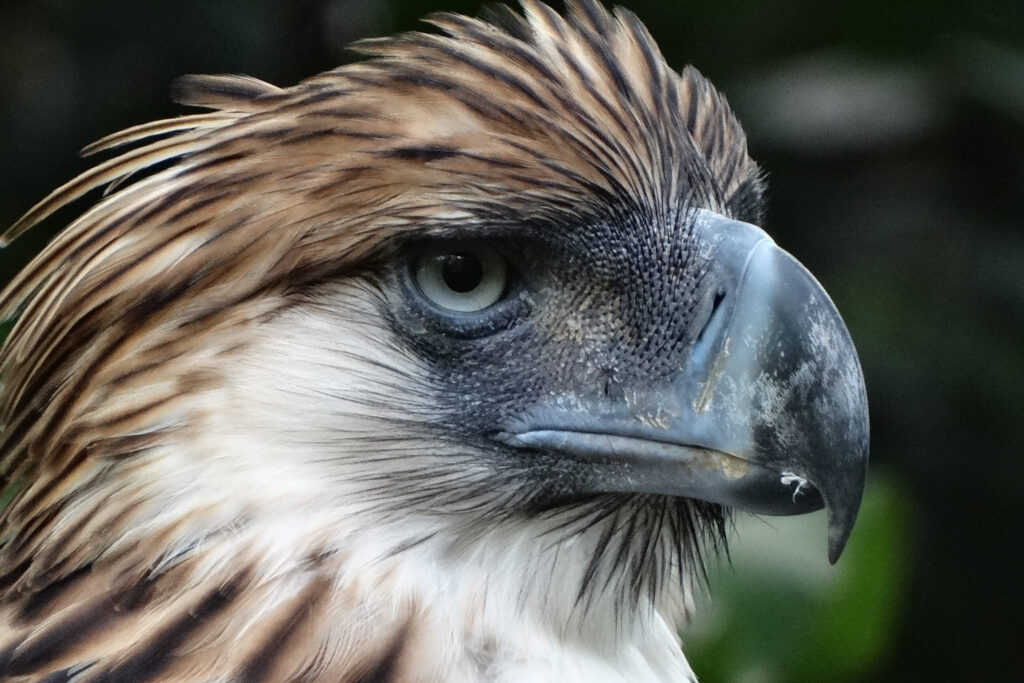
One of the world’s largest and most endangered eagles, the Philippine eagle (Pithecophaga jefferyi) nests exclusively in the untouched forests of the Philippines, specifically in primary forests with large trees like dipterocarps. Its survival is a barometer for forest health, as it requires vast tracts of old-growth forest, typically over 1,000 hectares, to find sufficient prey, such as flying lemurs, monkeys, and birds, and suitable nesting sites. The eagle’s habitat is characterized by steep slopes and high elevations, often above 600 meters. As a top predator, the Philippine eagle symbolizes the critical need to preserve ancient tropical forests, which are rapidly disappearing due to deforestation, logging, and agricultural expansion. According to the IUCN Red List, the Philippine eagle is listed as Critically Endangered. Source: philippineeaglefoundation.org
7. The Saola, the “Asian Unicorn”
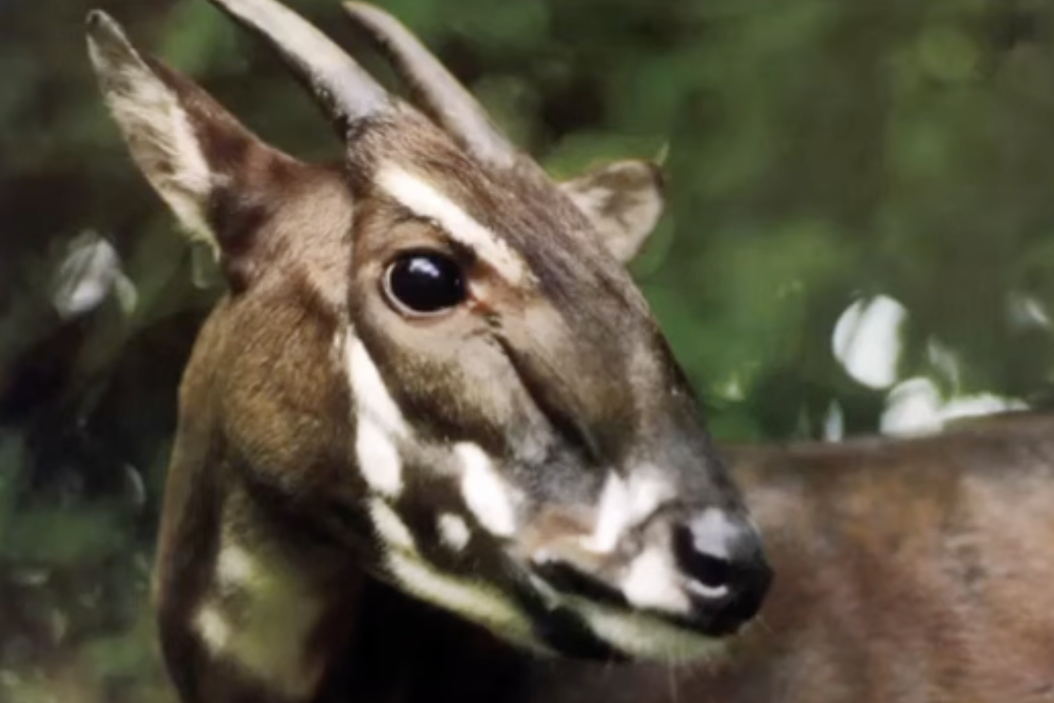
Discovered only in the 1990s within the Annamite Mountains’ ancient forests, straddling Vietnam and Laos, the saola (Pseudoryx nghetinhensis) is one of the rarest mammals on Earth, and was discovered through DNA analysis of horns found in local markets. Its elusive nature and limited range in old forests highlight how much biodiversity remains hidden in these ancient habitats, urging continued exploration and conservation. The saola’s habitat is characterized by dense, humid forests with steep terrain, making it difficult to survey and protect. According to the IUCN Red List, the saola is listed as Critically Endangered, with estimates suggesting fewer than 750 individuals remain in the wild. Source: iucn.org
8. The Kakapo Parrot
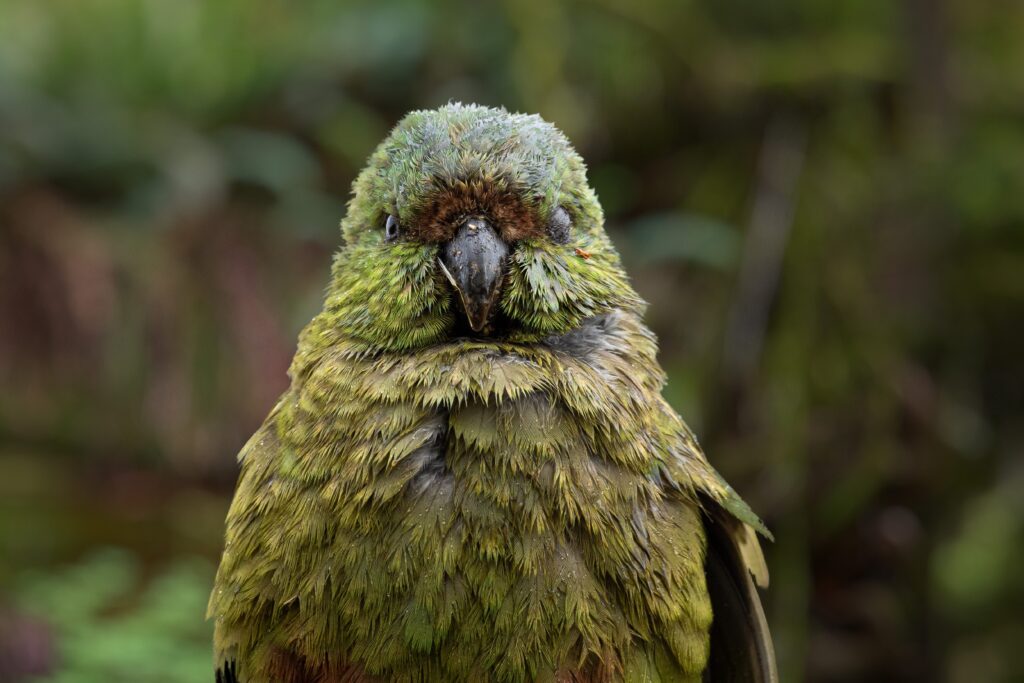
This critically endangered, flightless parrot from New Zealand’s ancient forests is unique for its nocturnal habits and ground-dwelling lifestyle, with the kakapo (Strigops habroptila) relying on its strong sense of smell and powerful legs to navigate its environment. The kakapo’s survival hinges on predator-free, mature forest environments, particularly on predator-controlled islands like Codfish Island and Anchor Island, where conservation efforts have successfully boosted its population. According to the New Zealand Department of Conservation, the kakapo’s population has been steadily increasing, thanks to these conservation efforts, but remains vulnerable due to its small population size and ongoing threats from introduced predators. Source: nzbirdsonline.org.n
9. The Quokka
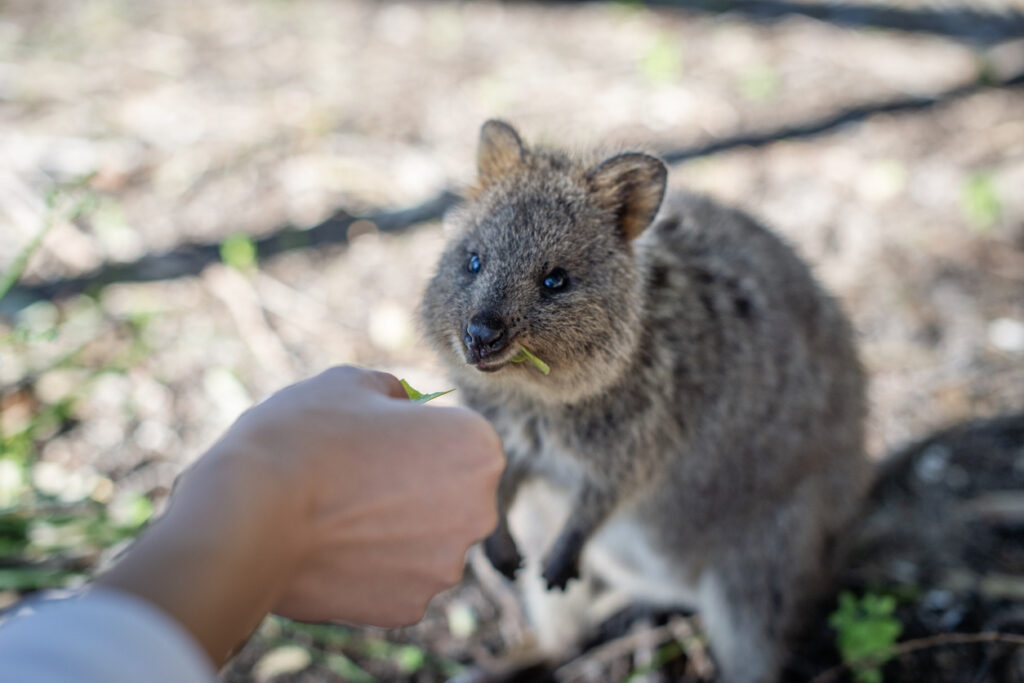
This small marsupial, native to ancient forest patches on Rottnest Island, Australia, is famous for its friendly appearance and curious nature, with the quokka (Setonix brachyurus) often referred to as the “world’s happiest animal” due to its endearing smile. The quokka’s reliance on dense forest undergrowth and scrublands for shelter and food demonstrates the importance of preserving even small fragments of ancient forests, which provide vital habitat for this vulnerable species. This small marsupial, native to ancient forest patches on Rottnest Island, Australia, is famous for its friendly appearance and curious nature, with the quokka (Setonix brachyurus) often referred to as the “world’s happiest animal” due to its endearing smile. According to the Rottnest Island Authority, conservation programs are in place to monitor quokka populations, manage their habitat, and educate visitors about respecting these unique animals. Source: rottnestisland.com
10. The Axolotl
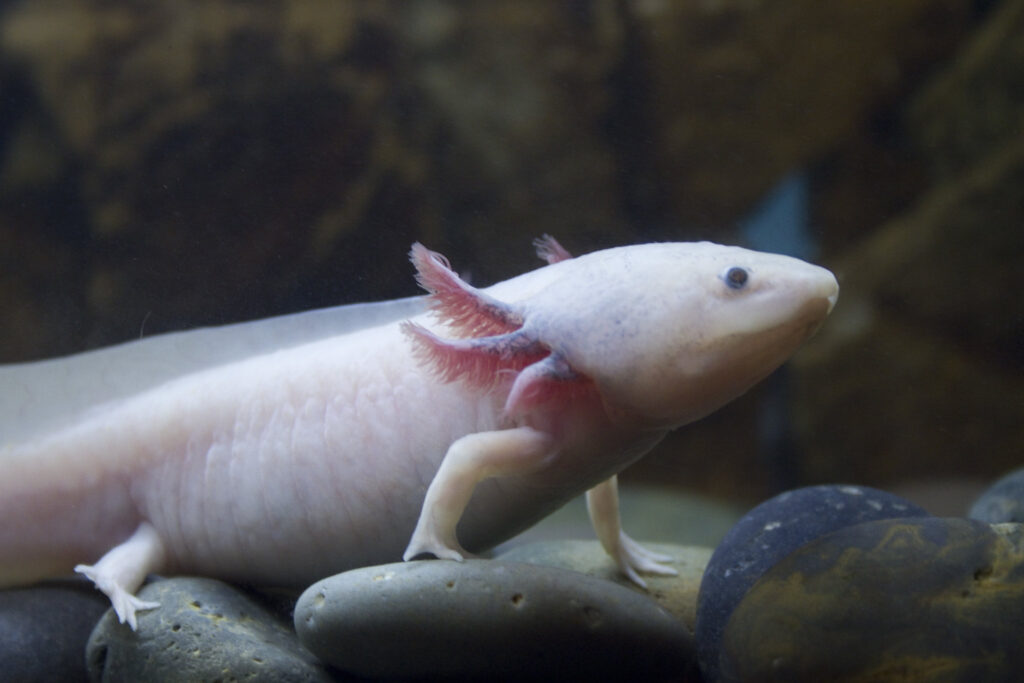
Native to ancient forest wetlands in Mexico, particularly Lake Xochimilco, the axolotl (Ambystoma mexicanum) is renowned for its extraordinary regenerative abilities, including its capacity to regrow limbs, eyes, and parts of its brain. Though aquatic, it is part of the forest ecosystem, relying on clean, stable water bodies formed by the forest’s hydrology, which are increasingly threatened by pollution, habitat destruction, and water extraction. According to the IUCN Red List, the axolotl is listed as Critically Endangered, highlighting the urgent need for conservation action to save this iconic species. Sources: news.mongabay.com
11. The Golden Lion Tamarin
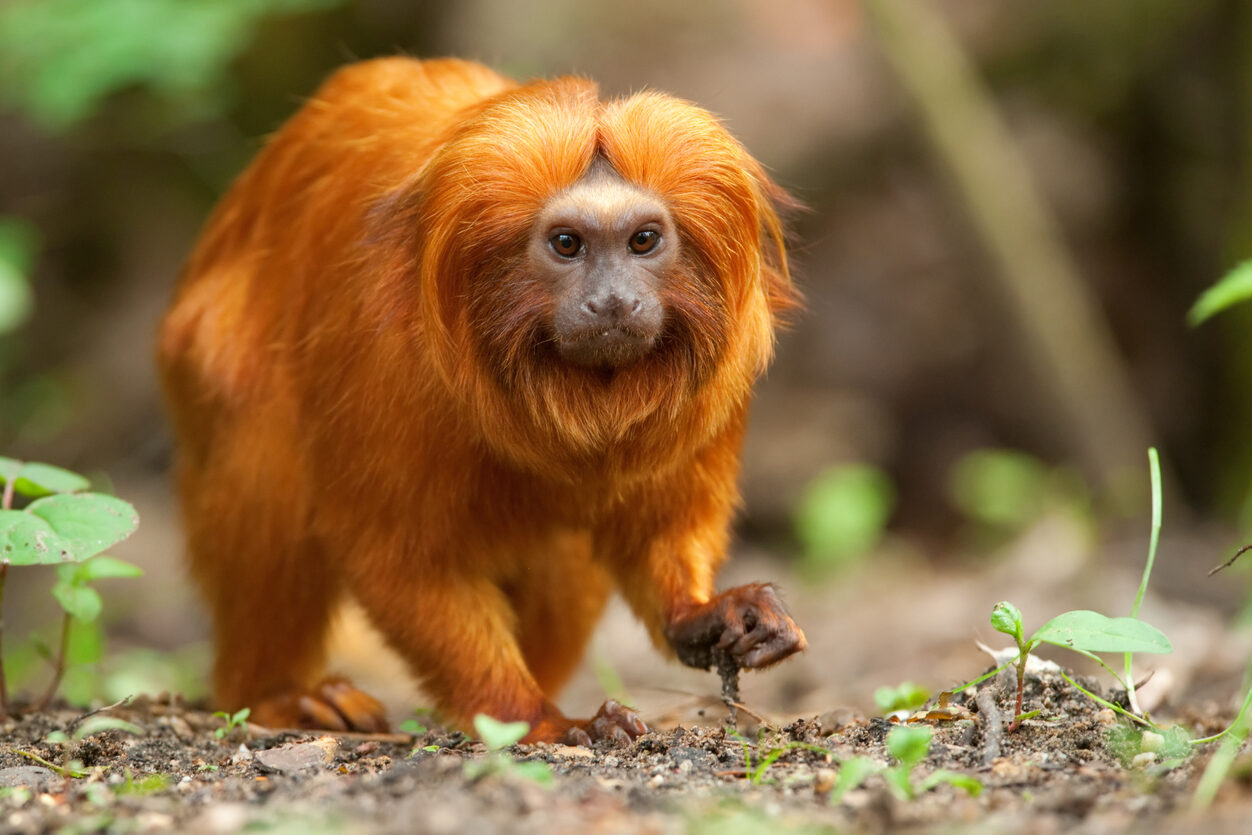
The golden lion tamarin (Leontopithecus rosalia) inhabits Brazil’s Atlantic Forest, one of the oldest and most biodiverse tropical forests, where it depends on the forest’s complex canopy layers for food, shelter, and social interaction. These small, vibrant primates live in family groups, foraging for fruits, insects, and small vertebrates in the forest’s rich biodiversity. According to the IUCN Red List, conservation efforts have contributed to population increases, but continued protection is necessary to ensure the species’ survival. Source: wwf.panda.org
12. The Okapi
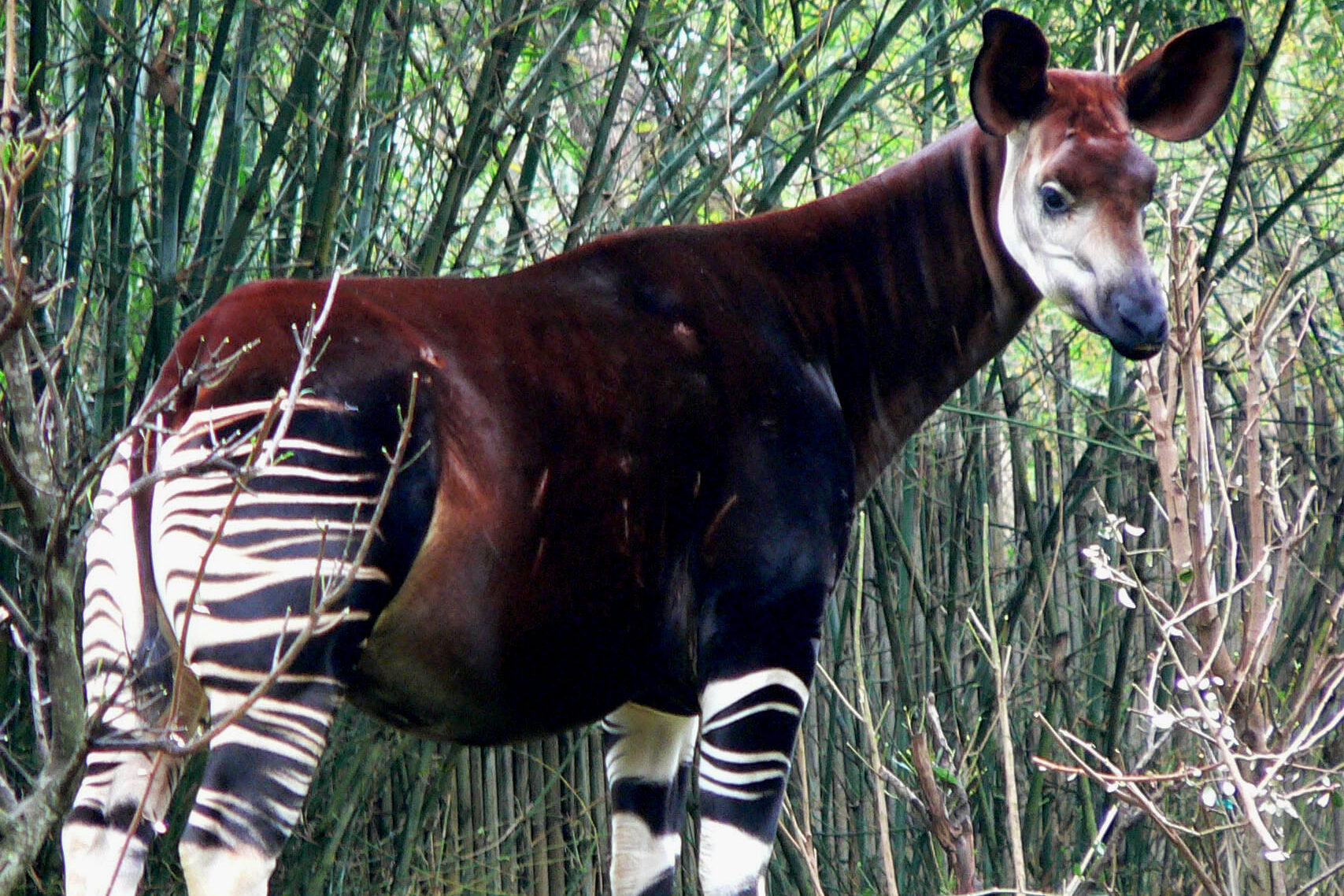
Living in the dense rainforests of the Congo Basin, the okapi (Okapia johnstoni) is a rare relative of the giraffe, with distinctive striped patterns on its legs and hindquarters that provide camouflage in the dappled light of the forest understory. This unique adaptation allows the okapi to blend into the ancient forest’s complex light patterns, where shafts of sunlight filter through the dense foliage. The okapi’s elusive nature is also combined with its limited range and habitat specificity. According to the IUCN Red List, the okapi is listed as Endangered due to habitat loss, poaching, and civil unrest in its native regions. Source: iucn.org
13. The Philippine Tarsier
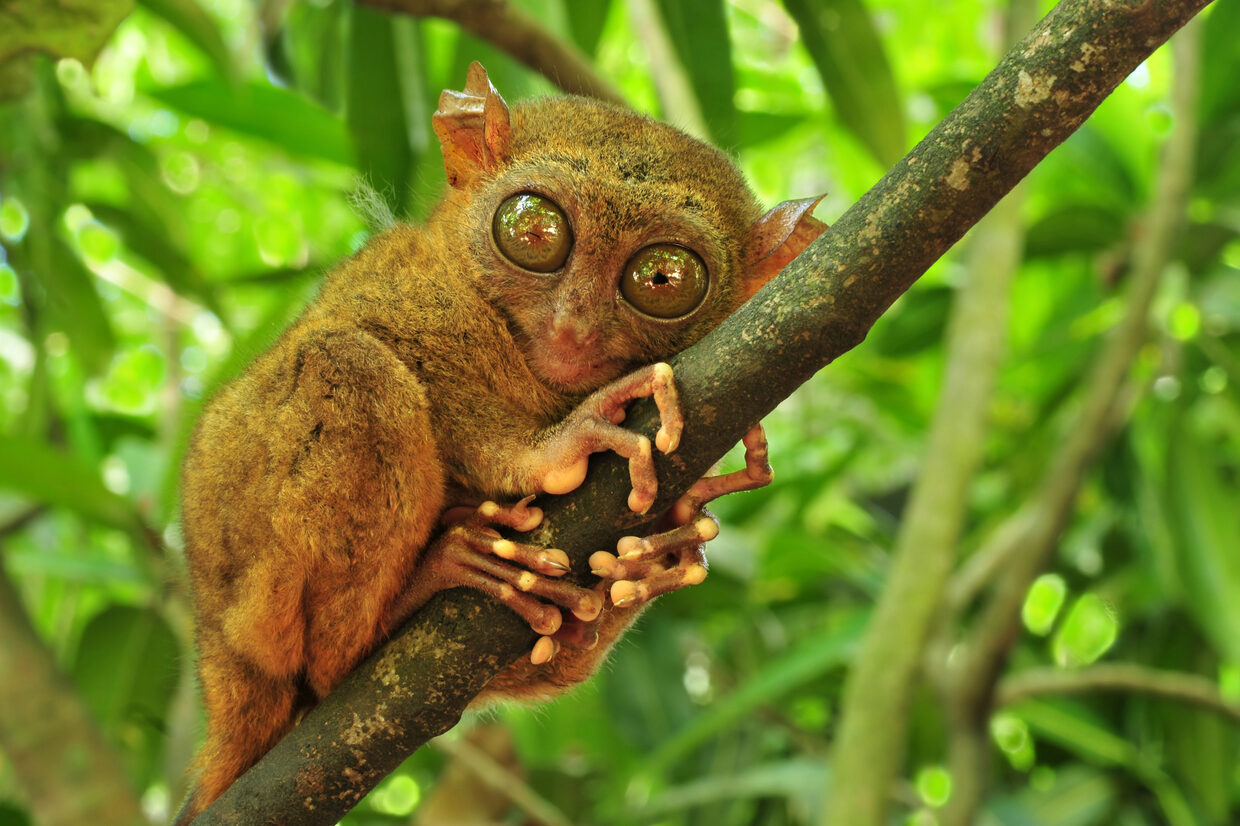
This tiny primate, the Philippine tarsier (Carlito syrichta), with enormous eyes adapted for night vision, lives in the Philippines’ ancient forests, where it navigates the dense understory with agility. It relies on the forest’s layered structure for hunting insects, such as crickets and moths, and avoiding predators, showcasing the complexity and biodiversity of old forest ecosystems. The tarsier’s unique adaptations, such as its large eyes, which are fixed in place, and its long fingers, enable it to thrive in this environment. According to the IUCN Red List, the Philippine tarsier is listed as Near Threatened, highlighting the need for continued conservation efforts to protect this species and its habitat.
14. The Olm
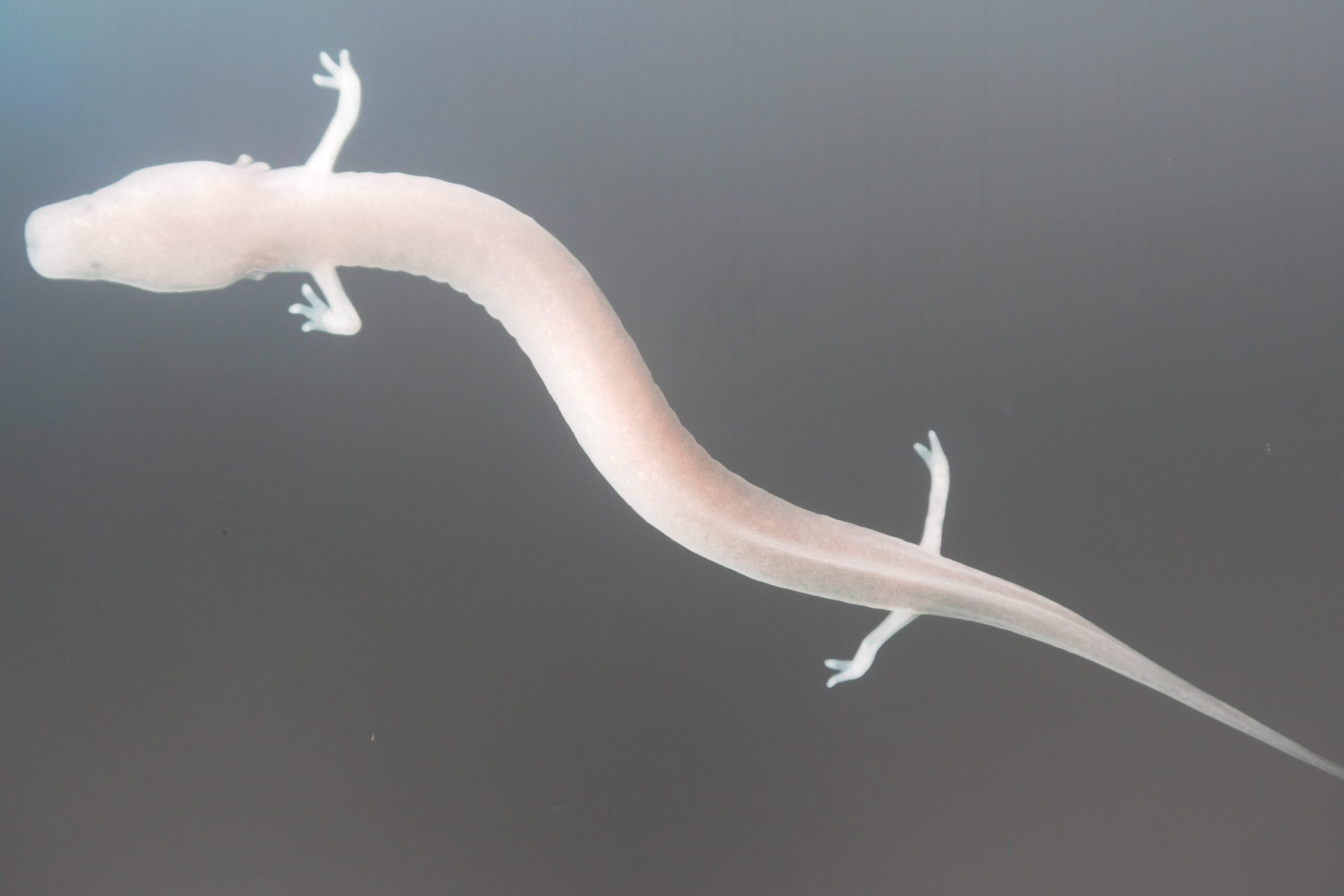
The olm (Proteus anguinus), a blind, cave-dwelling salamander, inhabits karst forests and cave systems of Europe, particularly in the Dinaric Alps. Its adaptation to dark, stable environments beneath ancient forests makes it a relic species, surviving in habitats that have remained largely unchanged for thousands of years. The olm’s unique features, such as its blind, eel-like body and slow metabolism, allow it to thrive in these underground environments, where food is scarce and conditions are stable. According to the IUCN Red List, the olm is listed as Vulnerable, therefore, continued protection is necessary..
15. The Bornean Orangutan
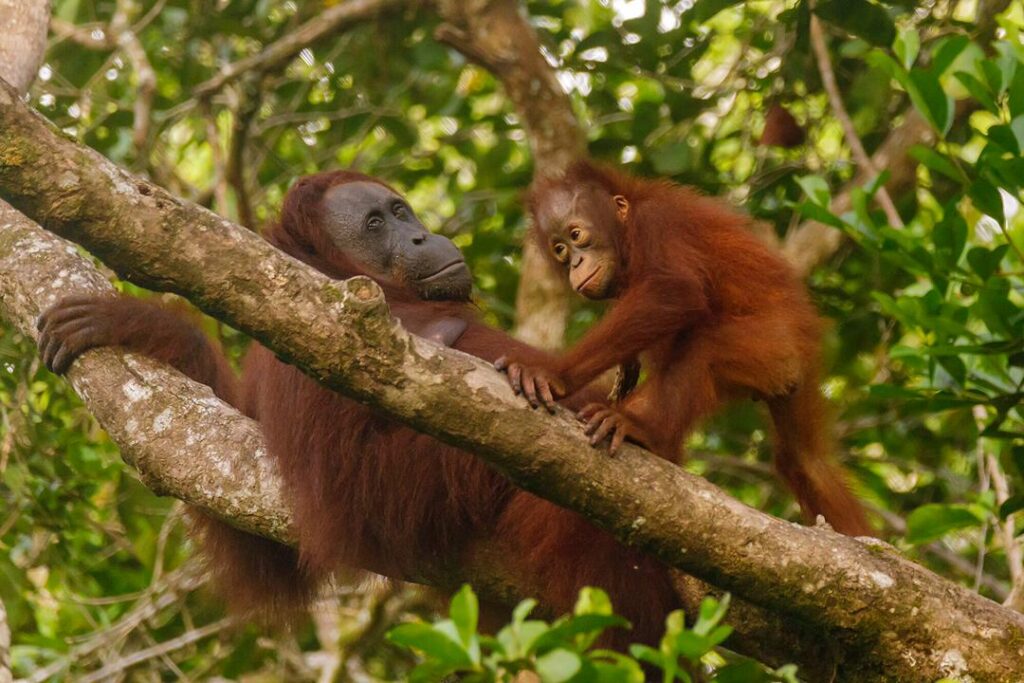
In Borneo’s ancient rainforests, Bornean orangutans (Pongo pygmaeus) build nests high in the canopy and exhibit complex social behaviors, using tools and displaying intelligence. Their survival depends on large tracts of old forest, which provide the fruit, leaves, and bark they rely on for food. According to the IUCN Red List, Bornean orangutans are listed as Critically Endangered
16. The Goliath Beetle

The Goliath beetle (Goliathus goliatus) is one of the largest insects globally, thriving in the decomposing wood and leaf litter of Africa’s ancient tropical forests. Its life cycle depends on the forest’s rich organic matter, where larvae feed on decomposing wood and adults emerge to feed on fruits and tree sap. According to entomologists, the Goliath beetle’s size, strength, and unique life cycle make it a fascinating example of insect adaptation to forest environments.
17. The Japanese Macaque

The Japanese macaque (Macaca fuscata), also known as the snow monkey, inhabits some of Japan’s oldest temperate forests, particularly in the mountainous regions of Honshu. This species has adapted to cold climates with unique behaviors like bathing in hot springs to warm up during harsh winters. Its ability to survive in these environments demonstrates the diverse adaptations ancient forests support. The macaques’ diet includes fruits, leaves, and bark, and they play a crucial role in seed dispersal and forest regeneration. According to conservation reports, habitat preservation and ecotourism management are essential for protecting these charismatic primates and their forest habitats
18. The New Zealand Longfin Eel
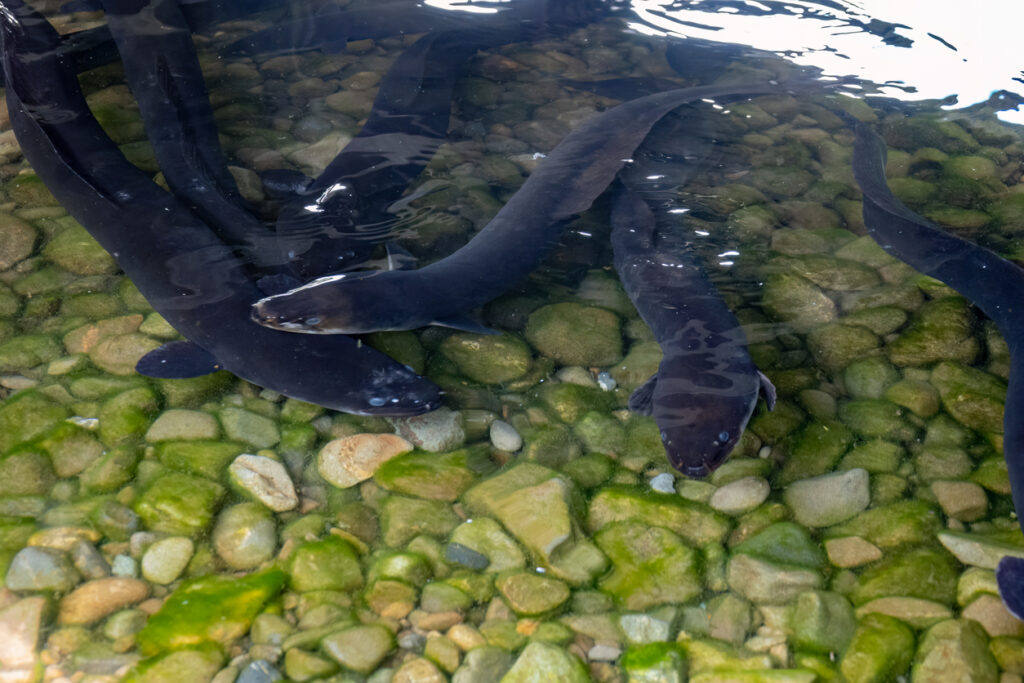
The longfin eel (Anguilla dieffenbachii) is native to New Zealand and inhabits ancient forest streams, rivers, and lakes. Longfin eels migrate from freshwater habitats to the Pacific Ocean to breed, traveling up to 4,000-6,000 kilometers. Habitat degradation, overfishing, and climate change threaten their populations. According to the Department of Conservation in New Zealand, it is currently listed as At Risk.
19. The Glass Frog
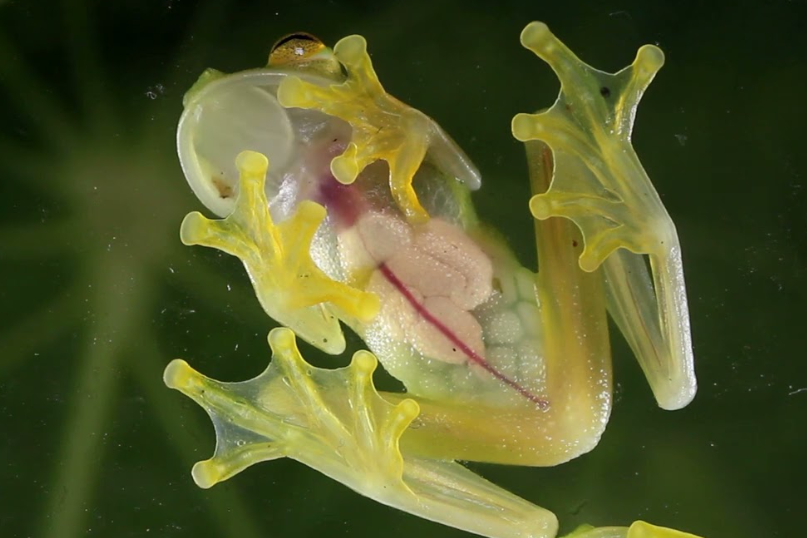
Native to Central and South America’s ancient forests, the glass frog’s transparent skin provides camouflage, allowing it to blend seamlessly with leaves. Its presence indicates a healthy, undisturbed forest atmosphere. Additional points about glass frogs include their unique characteristics, such as laying eggs on leaves overhanging water, which allows tadpoles to drop into streams or rivers upon hatching. Glass frogs are also indicators of ecosystem health due to their sensitivity to environmental changes, habitat loss, and climate change. According to the IUCN Red List, many glass frog species are threatened or endangered.
20. The Mountain Gorilla
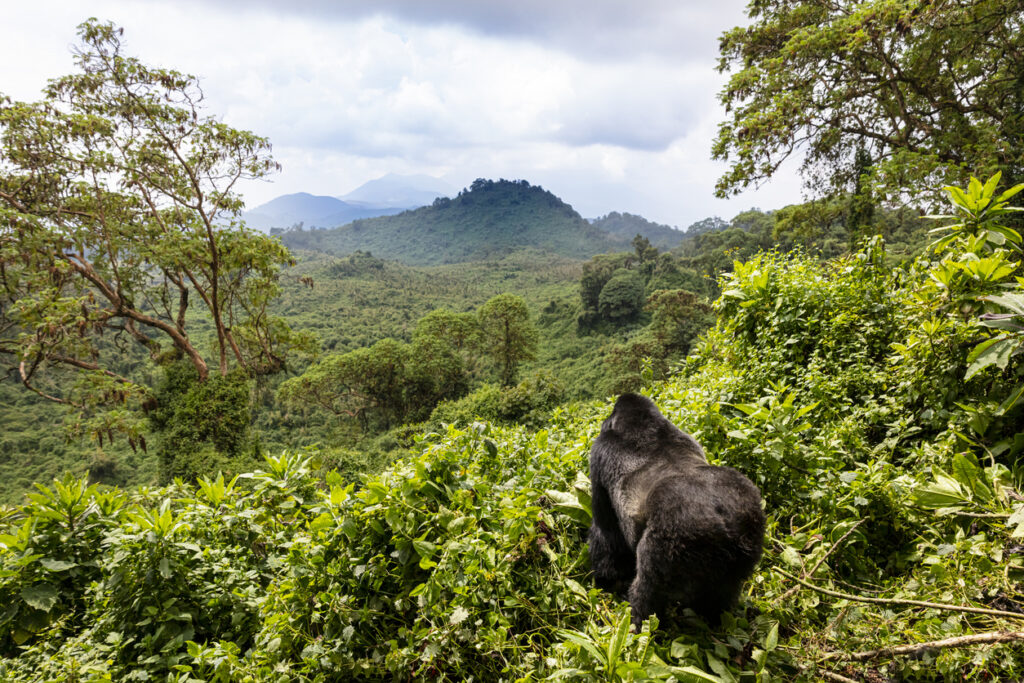
In the Virunga Mountains’ ancient forests, mountain gorillas (Gorilla beringei beringei) live in tight-knit groups, led by dominant silverback males, and feed on diverse vegetation, including leaves, shoots, and stems. They are also known to reside in the Bwindi forest, which extends across parts of Uganda and Rwanda. Their survival depends on the forest’s biodiversity and protection from human encroachment, such as poaching, habitat loss, and disease transmission. The Virunga Massif is home to approximately 1,004 mountain gorillas, and conservation efforts have contributed to a slow but steady increase in their population.
21. The Red Panda

In the Himalayas’ old-growth forests, the red panda (Ailurus fulgens) relies on bamboo understory and large trees for shelter and food. Its shy nature and specialized diet, primarily consisting of bamboo, make it vulnerable to habitat loss and fragmentation. The red panda’s habitat range includes Nepal, India, Bhutan, and parts of China and Myanmar. According to the IUCN Red List, the red panda is listed as Endangered due to habitat loss, poaching, and climate change.
22. The Kea
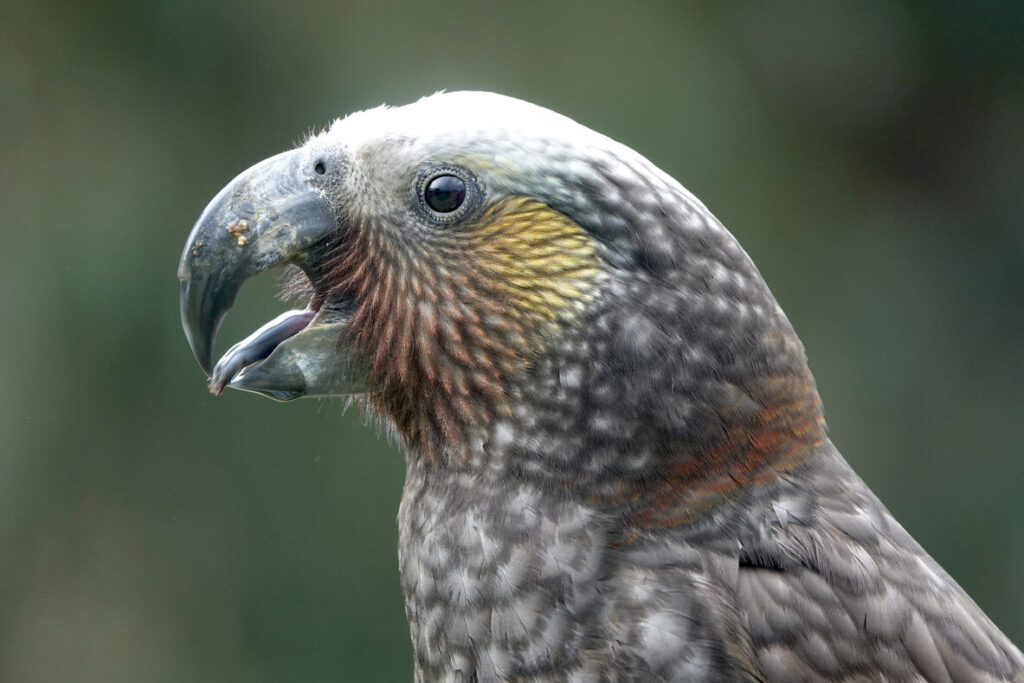
The kea (Nestor notabilis) is a large alpine parrot native to New Zealand’s South Island. Known for intelligence, curiosity, and playful nature, keas thrive in rugged, mountainous environments. They inhabit forests, alpine meadows, and rocky areas, feeding on a variety of foods including seeds, fruits, and insects. Keas are also known for their mischievous behavior, often interacting with humans and objects in playful ways. According to the IUCN Red List, the kea is currently listed as Threatened.
23. The Sunda Pangolin
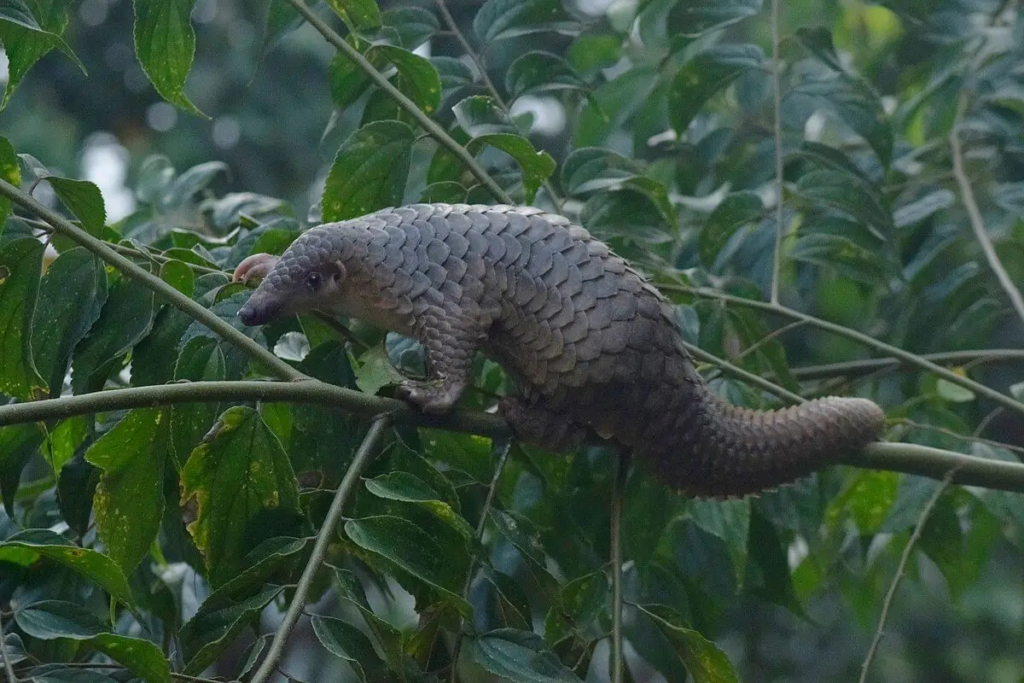
The Sunda pangolin (Manis javanica) is covered in protective scales made of keratin, allowing it to curl into a ball for defense. This elusive mammal forages in the leaf litter and soil of Southeast Asia’s ancient forests, feeding on ants and termites. By controlling insect populations, Sunda pangolins play a vital role in maintaining forest health and ecosystem balance. Unfortunately, they are heavily trafficked for their scales, which are in high demand on the black market, leading to a significant decline in their populations. According to the IUCN Red List, the Sunda pangolin is listed as Critically Endangered.
24. The Harpy Eagle

The harpy eagle (Harpia harpyja) is one of the most powerful birds of prey, nesting in the tallest trees of the Amazon’s ancient forests. With broad wings and sharp talons, it soars through the dense canopy to hunt monkeys, sloths, and other arboreal mammals. As a keystone predator, the harpy eagle plays a crucial role in regulating prey populations and maintaining ecosystem balance. Its reliance on expansive territories with intact forest habitats highlights the importance of preserving large areas of wilderness. Habitat loss, fragmentation, and hunting pose significant threats to harpy eagle populations. According to the IUCN Red List, the harpy eagle is listed as Vulnerable.
25. The Giant Anteater
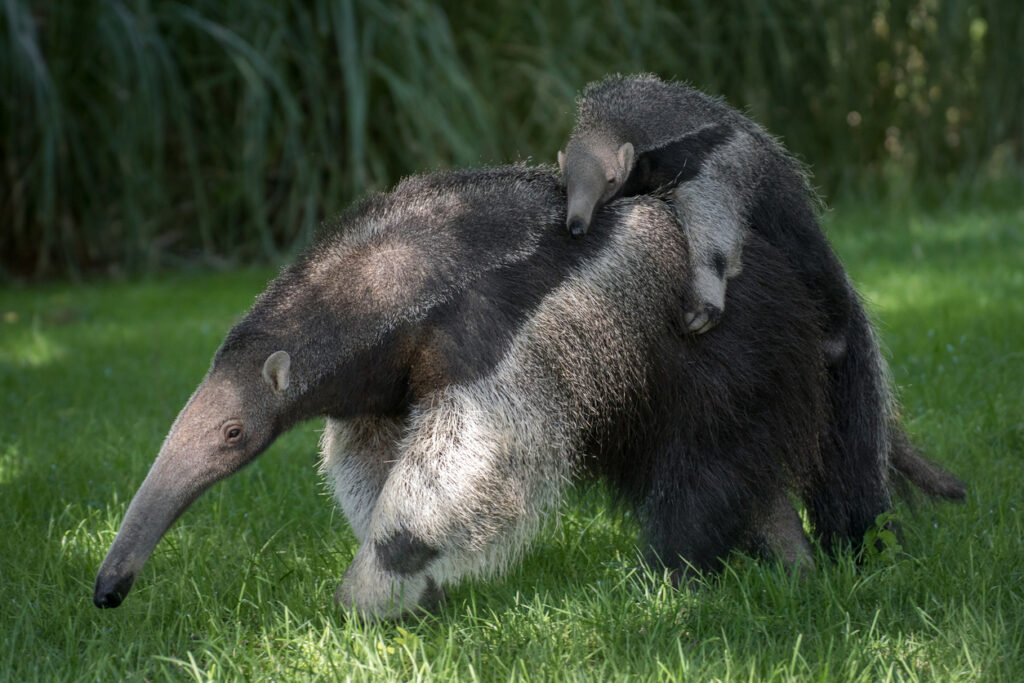
The giant anteater (Myrmecophaga tridactyla) is found in South America’s ancient forests, grasslands, and wetlands. It uses its long, sticky tongue to feed on ants and termites, helping regulate insect populations and maintain ecosystem balance. The giant anteater’s specialized diet and unique adaptations make it an important part of its ecosystem. Habitat loss, fragmentation, and hunting pose threats to giant anteater populations. According to the IUCN Red List, the giant anteater is listed as Vulnerable.
26. The Kakadu Dunnart
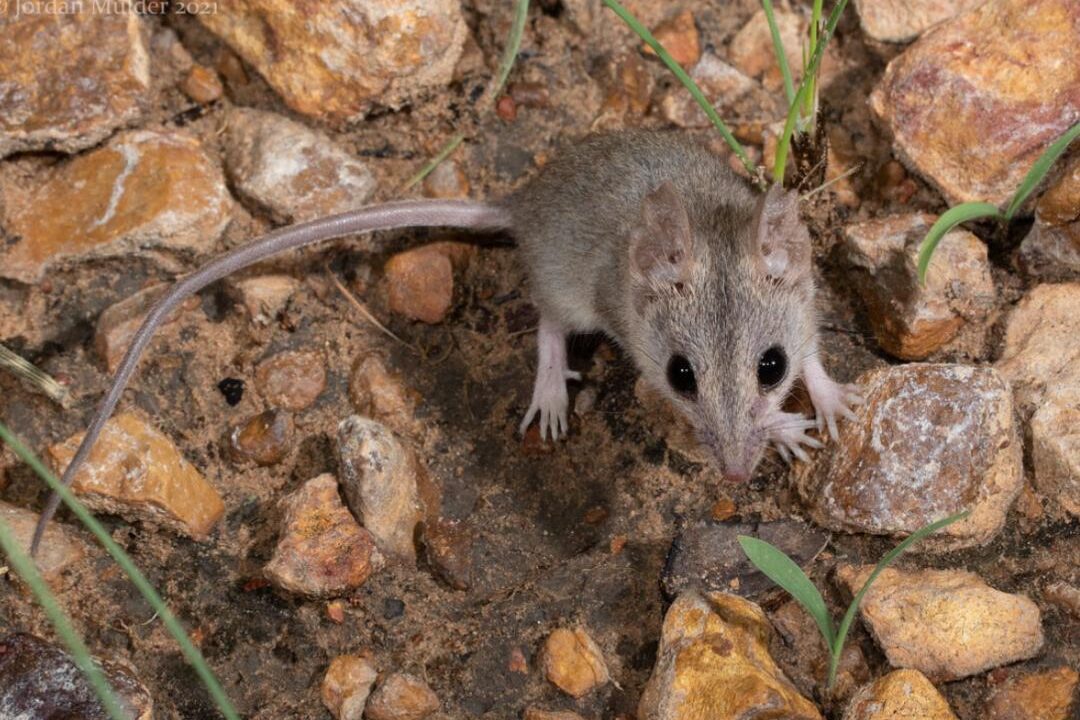
The Kakadu dunnart (Sminthopsis bindi) is a small marsupial inhabiting Australia’s tropical savannas and forests, including some of the country’s oldest ecosystems. It relies on complex ground cover, such as leaf litter and rocks, for hunting insects and evading predators. Dunnarts are carnivorous marsupials that play a vital role in controlling insect populations.
27. The Emerald Tree Boa

The Emerald Tree Boa (Corallus caninus) inhabits the tropical rainforests of South America, including countries like Brazil, Colombia, and Ecuador. Its vibrant green coloration provides excellent camouflage among the dense foliage, allowing it to ambush prey like small mammals, birds, and lizards. The boa’s slender body and prehensile tail enable it to navigate and rest in the forest canopy. The boa’s slender body and prehensile tail enable it to navigate and rest in the forest canopy. As a non-venomous snake, it plays a vital role in regulating prey populations. Habitat preservation is crucial for the Emerald Tree Boa’s survival, given its dependence on intact rainforest ecosystems.
28. The Saiga Antelope
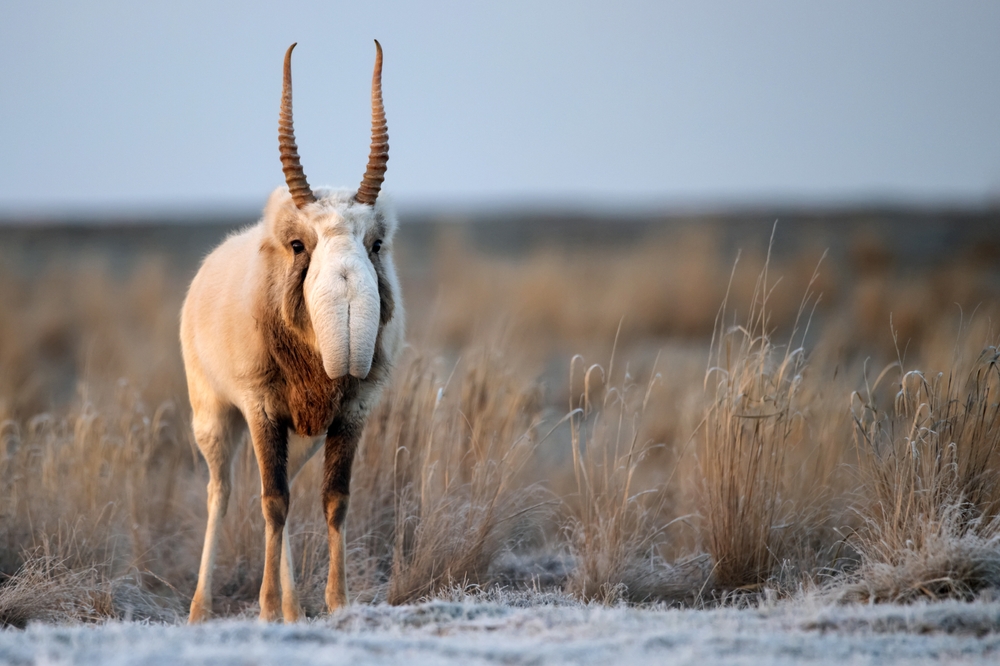
The saiga antelope (Saiga tatarica) primarily inhabits the steppes of Central Asia, but some populations do utilize forest edges and areas near ancient woodlands. These transition zones provide shelter, food, and protection from predators. The saiga’s use of forest edges highlights the ecological importance of these areas, where ancient forests influence surrounding ecosystems through seed dispersal, nutrient cycling, and habitat creation. According to the IUCN Red List, the saiga antelope is listed as Near Threatened.
29. The Philippine Flying Lemur
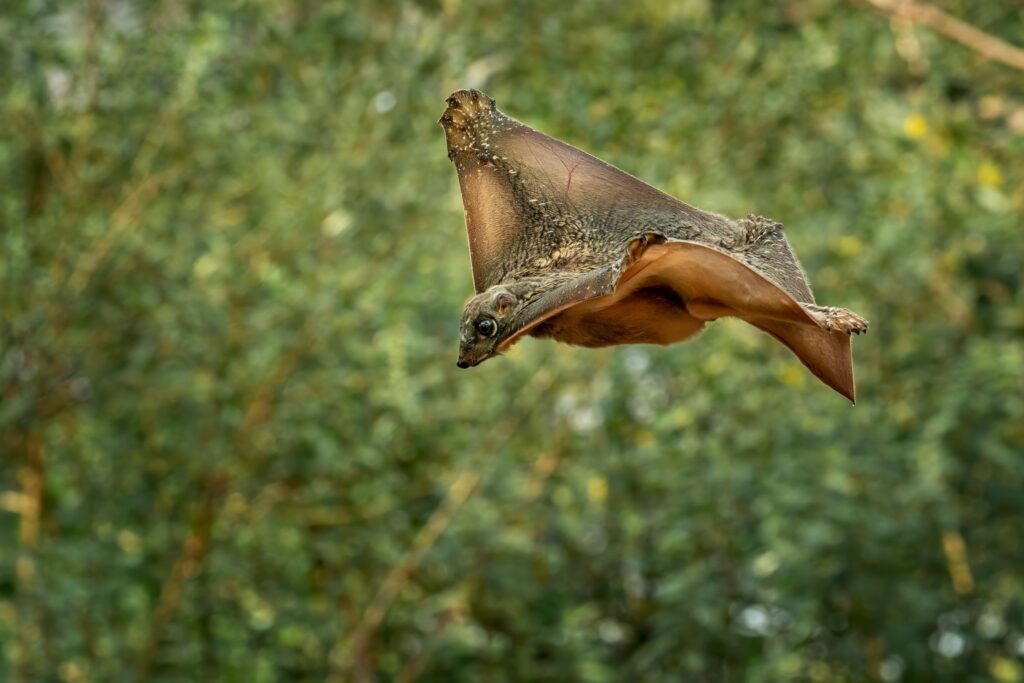
The colugo (Cynocephalus volans), also known as the flying lemur, inhabits the ancient forests of Southeast Asia, including the Philippines. Its patagium, a large membrane stretching from head to tail, enables gliding between trees, allowing it to navigate the dense canopy with ease. Colugos feed on leaves, fruits, and flowers, and their gliding ability helps them evade predators and traverse their forest habitat efficiently. As arboreal mammals, colugos rely on intact forest ecosystems, another importance of preserving ancient forests.
30. The Clouded Leopard
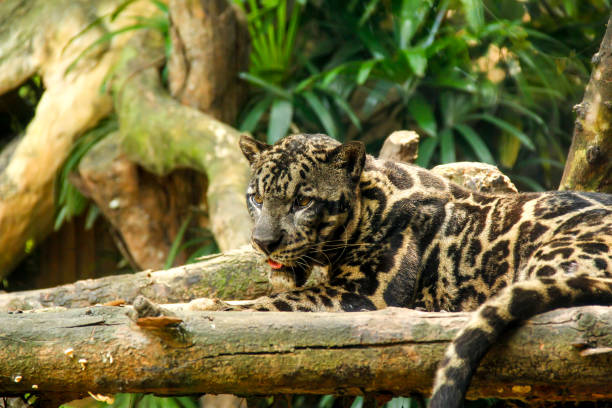
The clouded leopard (Neofelis nebulosa) is a majestic and elusive big cat inhabiting Southeast Asia’s oldest forests, including those in Thailand, Malaysia, and Indonesia. Its distinctive cloud-like patterned fur provides excellent camouflage in the dense undergrowth, allowing it to stalk prey like deer, wild boar, and smaller mammals. Clouded leopards rely on mature forests with dense vegetation and abundant prey for hunting and raising their young. Habitat loss and fragmentation, as well as hunting, pose significant threats to clouded leopard populations.
31. The Helmeted Hornbill
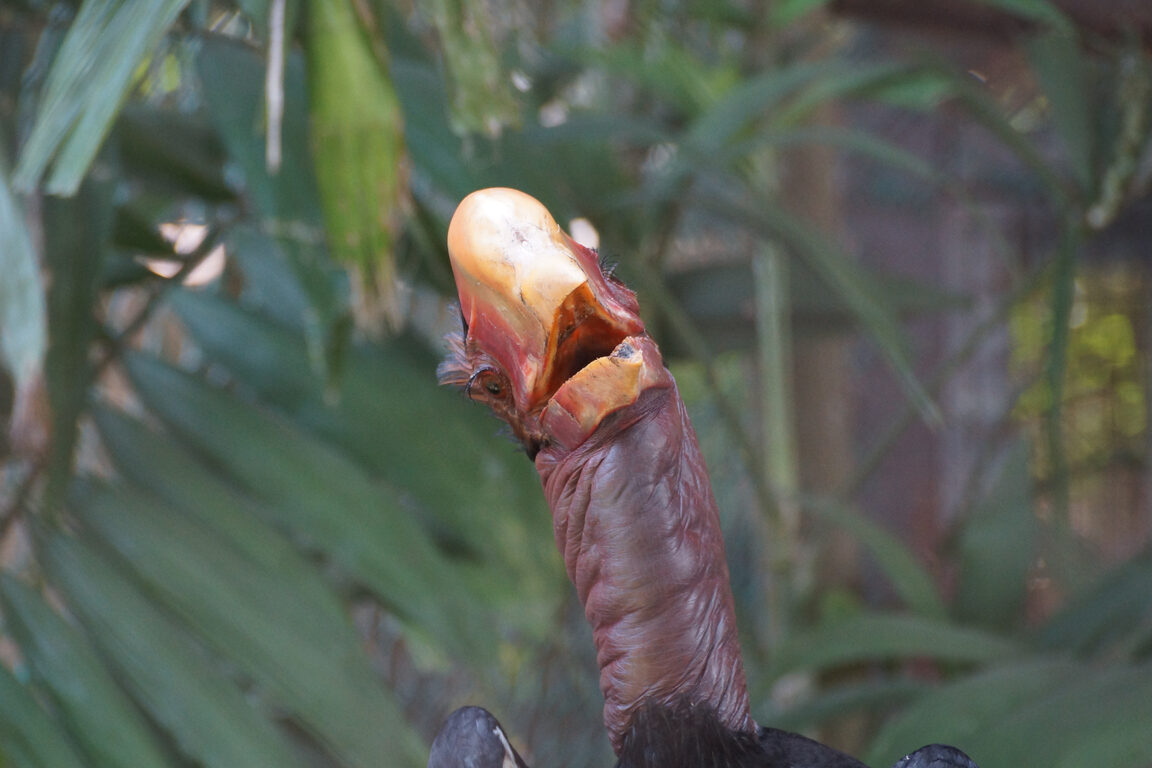
The helmeted hornbill (Rhinoplax vigil) is a distinctive bird species found in Borneo and Sumatra’s ancient rainforests. Its unique casque, made of solid ivory-like keratin, adorns its beak. Helmeted hornbills play a vital role in seed dispersal, consuming fruits and depositing seeds in new areas, contributing to forest regeneration and diversity. They also rely on large, fruit-bearing trees for food and nesting sites. Unfortunately, the helmeted hornbill is listed as Critically Endangered on the IUCN Red List due to habitat loss and hunting for its casque.
32. The Maned Wolf
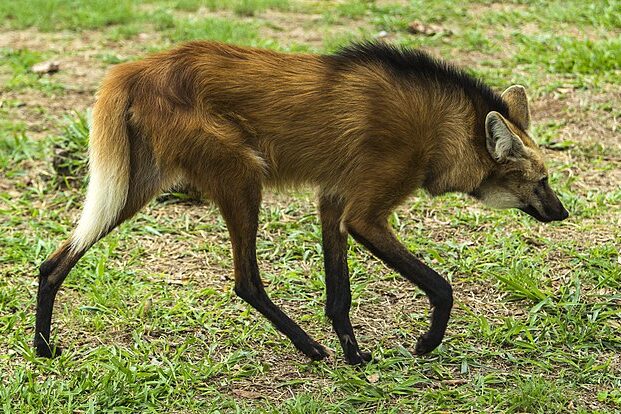
The maned wolf (Chrysocyon brachyurus) inhabits open areas, including grasslands and savannas, near ancient forest patches in South America. Its long legs enable it to navigate tall grasses and spot prey like small mammals, birds, and reptiles. Maned wolves play a crucial role in bridging forest and grassland ecosystems, utilizing forest edges for hunting and shelter. They contribute to maintaining ecosystem balance and biodiversity in these transition zones. According to the IUCN Red List, the maned wolf is listed as Near Threatened.
33. The Philippine Crocodile
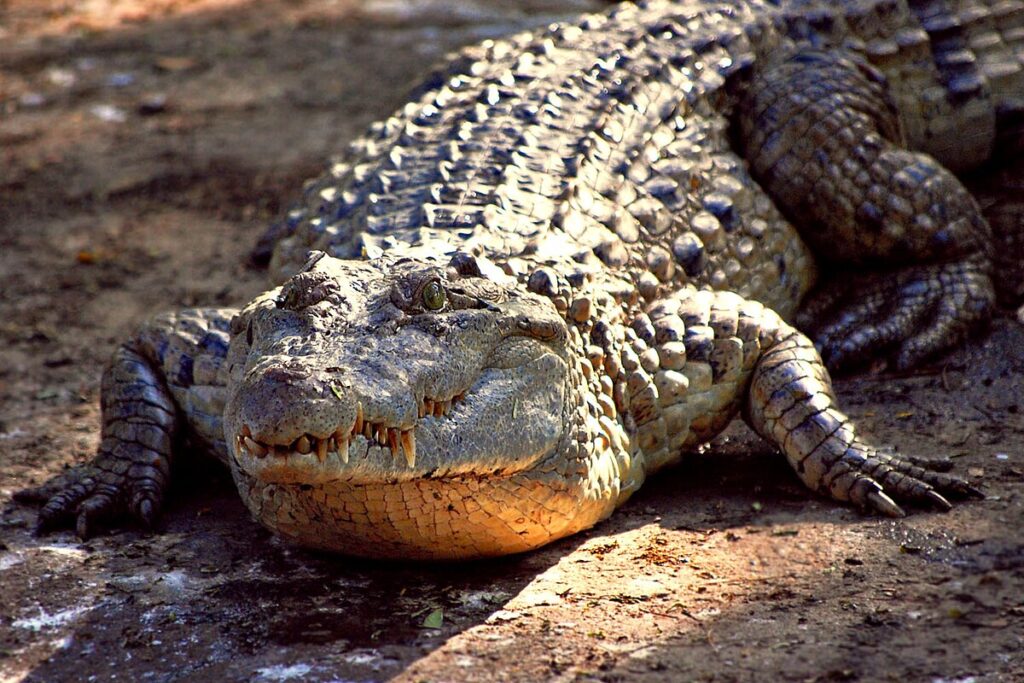
The Philippine crocodile (Crocodylus mindorensis) inhabits freshwater habitats, including rivers, lakes, and wetlands, within ancient forest areas in the Philippines.. Philippine crocodiles play a vital role in maintaining the balance of their ecosystems, regulating prey populations and serving as a food source for other predators. According to the IUCN Red List, the Philippine crocodile is listed as Critically Endangered.
34. The Ancient Forest Ringtail Possum
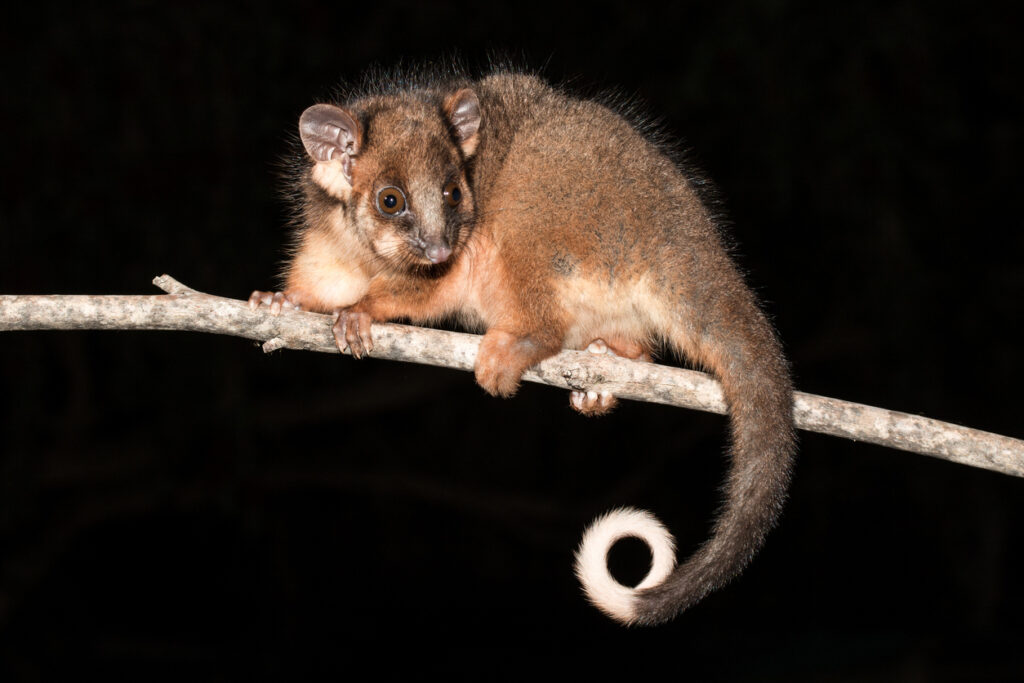
The forest ringtail possum (Pseudocheirus peregrinus) inhabits eastern Australia’s forests, including ancient forest ecosystems. These possums rely on dense canopy cover for food, shelter, and protection, highlighting the importance of complex forest structures in supporting biodiversity. They feed on leaves, fruits, and flowers, playing a vital role in seed dispersal and nutrient cycling. the animal is presently considered critically endangered, its status is confirmed by both the Biodiversity Conservation Act 2016 and the Commonwealth Environment Protection and Biodiversity Conservation Act 1999.
35. The Binturong
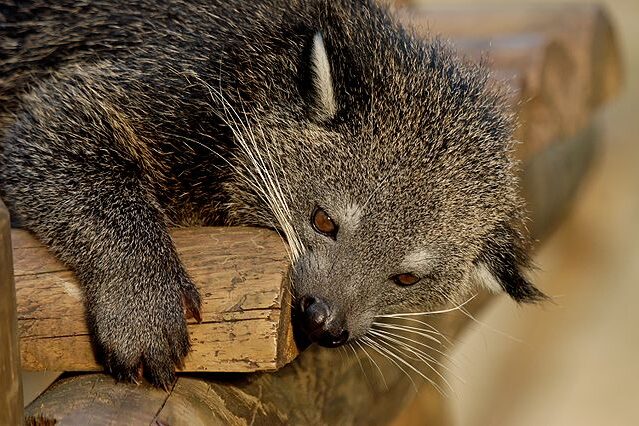
The binturong (Arctictis binturong), also known as the bearcat, inhabits Southeast Asia’s ancient forests. Its fruit-rich diet plays a vital role in seed dispersal, aiding forest regeneration and maintaining ecosystem diversity. Binturongs contribute to the spread of various plant species, including figs and other fruit-bearing trees, through their consumption and subsequent deposition of seeds in new areas. According to the IUCN Red List, the binturong is listed as Vulnerable.
36. The Japanese Giant Salamander
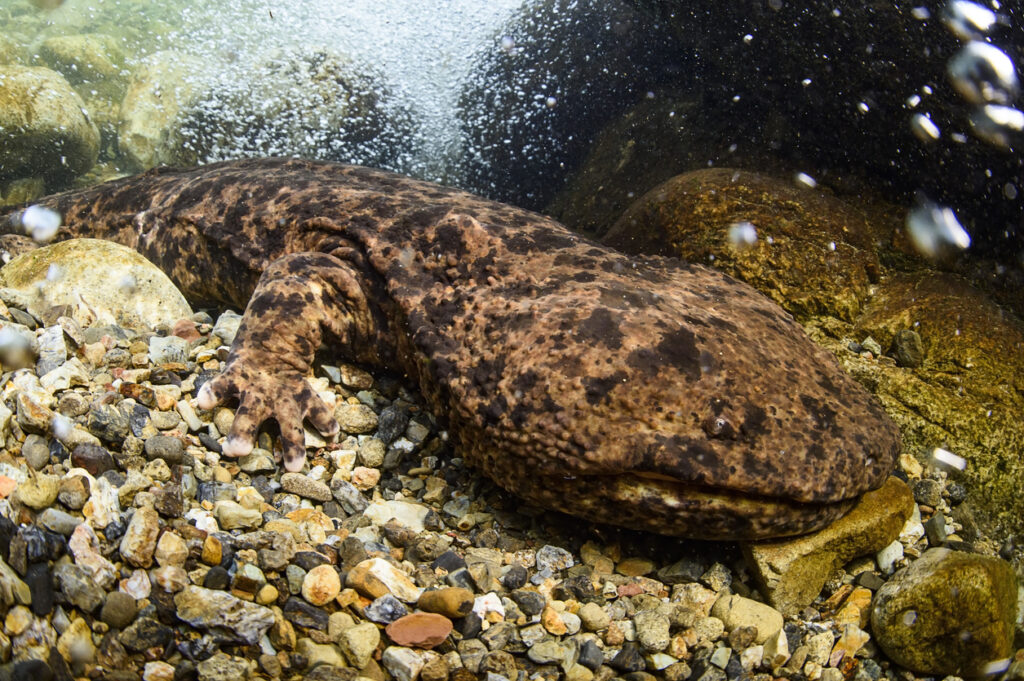
The Japanese giant salamander (Andrias japonicus) is one of the world’s largest amphibians, reaching lengths of up to 1.5 meters. It inhabits cold, clean streams and rivers in Japan’s ancient forests, where it feeds on aquatic animals like fish, crustaceans, and insects. Due to its sensitivity to environmental changes, such as habitat degradation, pollution, and climate change, the Japanese giant salamander serves as a crucial bioindicator, reflecting the health of Japan’s freshwater ecosystems. While the Japanese giant salamander was previously listed as Near Threatened, its conservation status has been upgraded to Vulnerable by the IUCN Red List in 2022.
37. The Mountain Tapir
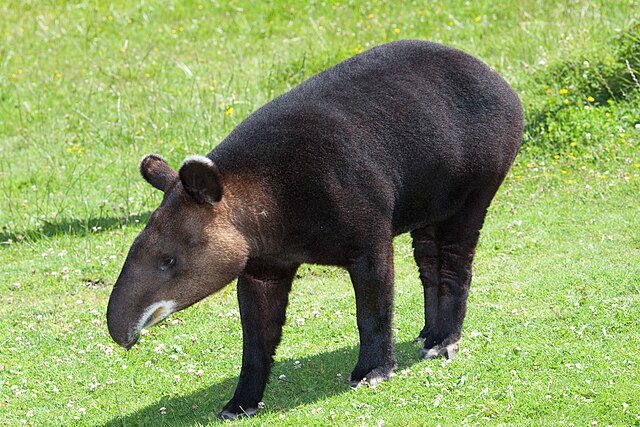
The mountain tapir (Tapirus pinchaque) inhabits the Andes’ cloud forests in South America, including countries like Colombia, Ecuador, and Peru. As a large herbivore, They are known as “gardeners of the forest” because of their huge role in seed dispersal, by consuming fruits and depositing seeds in new areas, and contributing to forest regeneration and biodiversity. Mountain tapirs alone help maintain the structure and composition of cloud forest ecosystems, supporting a wide range of plant and animal species. This categorization reflects the species’ high vulnerability to threats like habitat loss, poaching, and competition with domestic animals.
38. The Flying Squirrel
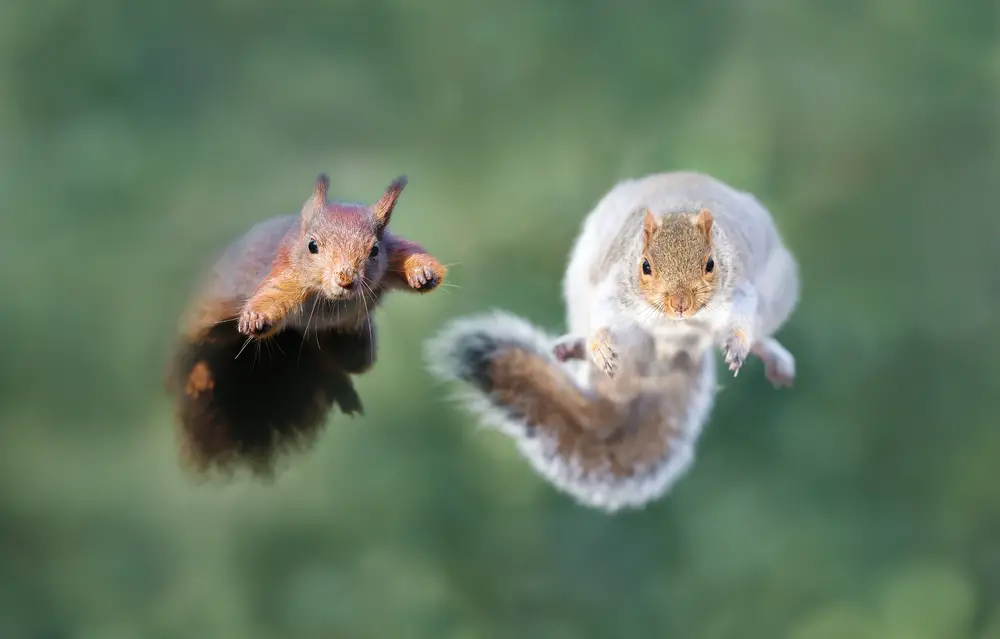
Flying squirrels, found in ancient temperate forests across Asia and North America, are nocturnal gliders that use their patagia to move silently between trees. This unique adaptation enables them to avoid predators, find food, and navigate their forest habitats with agility. They play a vital role in forest ecosystems, contributing to seed dispersal and nutrient cycling, and serve as a food source for various predators. With over 50 species, flying squirrels exhibit remarkable diversity, ranging from the tiny pygmy flying squirrel to the large grey and white flying squirrel. Their large eyes and keen senses help them navigate in the dark, and some species are known to form large social groups, Additionally, some species, like the pygmy scaly-tailed flying squirrel, can even detect ultrasonic frequencies. However, habitat loss and fragmentation pose significant threats to flying squirrel populations.
39. The Warty Newt
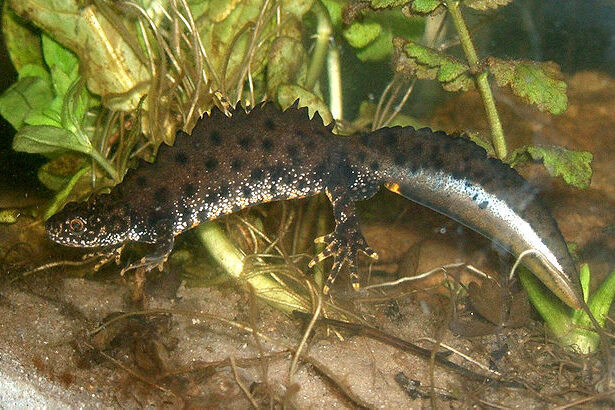
The Northern crested newt (Triturus cristatus), also known as the warty newt, inhabits Europe’s ancient woodlands, ponds, and aquatic habitats. Its distinctive appearance and defense mechanism of secreting tetrodotoxin, a potent neurotoxin is used to deter predators. This adaptation contributes to the forest’s complex food and predator-prey relationships, influencing ecosystem dynamics. According to the IUCN Red Red List, the European crested newt is listed as Least Concern, but some subspecies and populations face decline.
40. The Tasmanian Devil
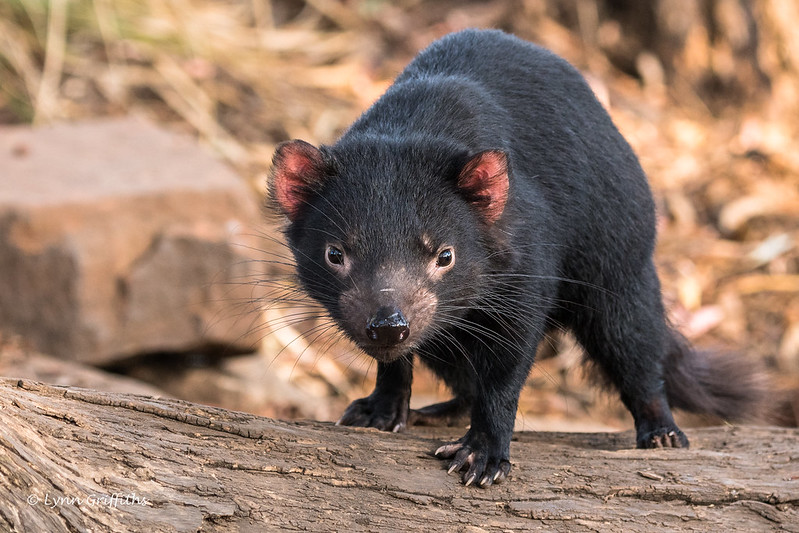
The Tasmanian devil (Sarcophanops harrisii), known for it DFTD (devil facial tumor disease), inhabits Tasmania’s forests and woodlands. As a carnivorous marsupial, it plays a crucial role in controlling populations of smaller animals, maintaining ecosystem balance. Tasmanian devils prey on various species, including wallabies, possums, insects,and even larger carcasses like kangaroos and sheep in farming areas. They are known for their ability to consume almost the entire carcass, including bones and fur, thanks to their powerful jaws and sharp teeth. According to the IUCN Red List, the Tasmanian devil is listed as Endangered.
These species, inhabiting ancient forests worldwide, play vital roles in maintaining ecosystem balance, biodiversity, and health. As keystone species, they contribute to seed dispersal, nutrient cycling, and predator-prey dynamics. However, many face threats like habitat loss, climate change, and disease, highlighting the need for conservation efforts to protect these ecosystems and the species that inhabit them. Sharing their stories helps ensure that the magic of the world’s oldest forests endures for future generations. Share this list with your friends and families today and follow us for more updates.


